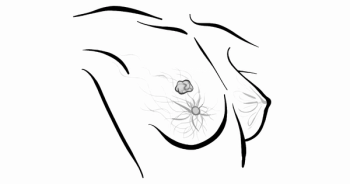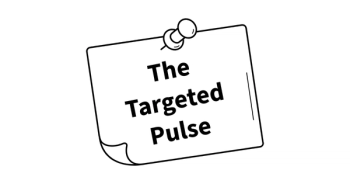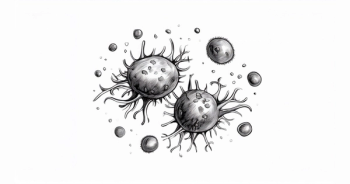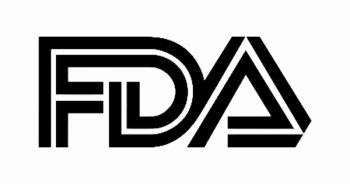
Peers & Perspectives in Oncology
- July 2025
Combat Time Toxicity and Burnout in Oncology With Smarter Workflows
Oncologists face burnout from administrative work, but new technology offers solutions to streamline workflows and improve patient care.
In oncology, administrative tasks such as increased messaging with patients and after-hours work contribute to physician burnout. This issue is called time toxicity, the continuation of which is considered unsustainable by experts. The resulting burnout may cause further oncologist shortages, leading to even larger problems.
“This has an impact on patients, the system, the cost of care, quality of care—everything. It’s going to affect everything in cancer care,” Pallav K. Mehta, MD, said in an interview with Targeted OncologyTM.
Mehta, a hematologist/medical oncologist, assistant professor of medicine at Cooper Medical School of Rowan University, and director of integrative oncology and practice development at MD Anderson Cancer Center at Cooper, also discussed systemic solutions, such as technology-enhanced scribes and virtual care platforms that aim to alleviate administrative burdens and restore balance to oncologists’ workflows while improving patient care.
Targeted OncologyTM: How does time toxicity extend beyond patients to impact oncologists, and what are some unsustainable time burdens they face daily?
Pallav K. Mehta, MD: Time toxicity is a term that first started appearing in the literature for patients because the treatments were getting more and more complicated, and the insurance regulations and the back and forth for patients—the amount of time patients were actually spending on cancer treatment, not just physically sitting in the office but everything around it, was escalating. As patient care started to get more complicated, we began to realize that for the care team—the nurses, advanced practice providers, and oncologists—this became a bigger problem, particularly as we started to look at burnout.
There are several variables that go into this. I’ve been in practice for almost 20 years, and I spent the first half in community practice and the last decade in an academic setting, so I’ve had the opportunity to see both sides of it. When I started practice, we didn’t even have electronic medical records [EMRs]. I was one of the young upstart doctors who thought that once we got EMRs, everything was going to be great; we would make things more efficient, things would go faster, and our lives would actually become easier. There’s certainly been some good things that came out of it, in terms of our ability to look at data. It’s become this 800-lb gorilla in the day-to-day of the oncologist. The average oncologist sees probably 15 to 20 patients per day. It’s not just about dictating a chart anymore. Getting through charts takes a lot more time. There are data on the number of clicks that a doctor has to do just to get through a chart—the specific information that has to be put in per chart, and then actually dictating that chart. We don’t have time during the day, because while we’re dealing with patients, there’s also been this significant increase in messaging.
Every oncologist and every organization has been talking about this problem, where, in a regular day, I could look at my inbox of an EMR that I use, the Epic inbox—and I could have cleared it an hour ago—and now there’s another 10 to 15 messages now in there. By the end of the day, it can be numerous messages and calls from staff, and also from patients because, as most of us know now, patients have access to their physicians. This is great from a patient perspective because they can now message their physician and their team, but from the perspective of the oncologist, it’s also significantly increased the amount of time that we have to spend in terms of responding to those.
Those are a few of the variables that have led to this increase in time that is not just seeing a patient, it’s…both during the day and…after dinner. I don’t think there’s [any oncologist] I know—and this is not an exaggeration—[who] doesn’t spend time at home dealing with messages and calls. I’ll sometimes give patients my email to make it easier for me, and I’m not so sure it does. I answered messages last night, [and] I think [at] 2 [AM], I was answering my last email. Putting all that together has contributed to this concept of time toxicity.
What is provider burnout, and what are its downstream effects in cancer care?
Burnout is defined as a state of emotional exhaustion, almost a depersonalization that starts to happen with oncologists, where it starts to affect not just their patient care but also their ability to interact with everyone—more irritability during the day, inability to make decisions, and more self-doubt, even at home. I went through all this, so I had the personal experience, unfortunately. There is a term called compassion fatigue, where you only have so much compassion in a day. You’re seeing cancer all day and then, on top of that, you’re burned out from everything else. It’s hard to have that same level of compassion at home for the things that are going on.
It affects the oncologist’s life in many ways and we are seeing a trend where many are cutting back on clinic time or even leaving clinical care. As more nurses looking to leave clinical care in the next 5 years…their burnout will increase the oncologist’s burnout. If oncologists leave and cut back, you’re looking at lesser ability to see new patients with cancer across the board.
As the volume of cancer is increasing, we’re recognizing [more] cancers, and everyone’s getting treatment now. It’s not like it was 20 years ago, where a patient may have surgery and be done. Everyone is receiving treatment, and the treatments are more complicated. If you put all that together, you have doctors leaving, and the people left are dealing not just with the volume, but they’re also] dealing with more complexity. It’s this vicious cycle that’s happening. I was on an advisory board recently with a dozen or so breast medical oncologists, which is my specialty, and almost every single one is looking to back down or leave, which is scary because these are all incredibly competent, caring, and renowned medical oncologists. It’s happening everywhere. This has an impact on patients, the system, the cost of care, quality of care—everything. It’s going to affect everything in cancer care.
What systemic changes or innovations could help reduce administrative burdens for oncologists?
To give credit to health systems and even to the federal government, they have started to recognize this issue. Some steps have started to happen. They’re still in their infancy, and there’s a long way to go. I think the initial steps were—I don’t want to say they were misguided, but they were focusing on the concept of wellness. While it’s important…if we just focus on that, we’re missing the more systemic issue that’s impacting this. The next steps have been to look at how an oncologist is doing on an individual level and a day-to-day level.
One of those things has been the advent of virtual and even artificial intelligence [AI]-enhanced scribes. So charting is still in its infancy, but I think as these get better over the next year or 2, you’re starting to see more and more adoption of these scribes from your phone that listen to the conversation and scribe a note for us. That sounds simple, but for us, that could completely change our day in terms of getting notes completed, because we need notes to authorize our chemotherapies, tests, and everything. So that’s one thing we’re seeing.
Another is the advent of virtual care platforms. Reimagine Care—the company for which I’m a medical director—is one of the companies doing it in a unique way, where we’re focusing on how we can take the messaging and all those symptom-related issues, calls, and portal messages off the plate of the care team. Because virtual services—both technology based and human based—are a big part of this solution. We know AI…is getting better and better at answering questions every day. I did a test myself recently of a pretty complicated patient case, and it was able to answer some fairly nuanced oncology questions. I think, as that gets better, these AI-based services will be able to answer questions.
But technology alone will not be the answer, because cancer is a field that requires human interaction. I think patients with cancer are frightened, especially if they’re on aggressive chemotherapy and…not feeling well, but they want to be able to speak to a human being. It’s this integration of technology and humans, and having that integration in a seamless way, that I think will be part of the solution. The rest of it is around how we manage schedules and what the expectations are. They should be driven by the oncologists, not by a system.
Can you explain how Reimagine Care and similar tools can help oncologists on a day-to-day level?
At Reimagine Care, there’s a lot that we do when we integrate with cancer centers. We partner with both community oncology health systems and National Cancer Institute comprehensive centers. What we do that’s unique is we do the hard stuff. We get right into the trenches of treatment. All of it is important, but the hardest part is…what [the patients] are going through.
Our team and our technology work together to manage the patient’s disease. We have a virtual front door; it’s a natural language process–based AI assistant that patients have access to 24 hours, 7 days a week, 365 days a year. So, if it is 2 AM on a Saturday and the patient is vomiting, they can text, which is another thing we were intentional about. That text was just a lot easier than passwords, portals, and apps. I think people are tired of all that. They can text Remi, the name of our virtual assistant, and Remi is able to respond to the extent that it can. But as I said, we wanted to be safe, and we wanted to make sure technology was not the only thing available. Remi is smart enough to know when there are issues it can’t handle, so it escalates to our team. We have medical assistants and nurses who have significant oncology experience, so they’re able to answer questions or as needed, escalate appropriately up to the nurse practitioner who can do telehealth visits, prescribe medications, and further walk the patient through what’s going on.
We’ve been able to show that we can help patients avoid having to go to emergency departments and urgent care centers, even to the extent that they’re avoiding going back to the clinic when they don’t need to. This helps patients…providers, and the cancer center, because those urgent visits that can mess with the clinic flow when you have to double-book a patient slot are very stressful for everyone. By avoiding those things, we make a more efficient clinic and a clinic day that—to go back to time toxicity—allows the oncologist to breathe a little easier at the end of the day.
How urgent is it to address this time toxicity and physician burnout?
I cannot stress this enough: It needs to happen right now. It should have happened yesterday. It should have happened awhile ago. I think what tends to happen in health care, and in most things, is when it hits crisis level, people start paying attention. But attention should have been given to this a long time ago. The same is true for patients and their issues of time toxicity; we should have been talking about this years ago, so there is no time to wait right now. Every bit of data tell us cancer cases are on the rise. Post COVID-19, it was initially felt to be a diagnostic thing because patients weren’t getting their primary care for a while. We know it’s not just a COVID-19 issue; it is an issue that’s been going on before COVID-19. It’s continuing to happen. We’re trying to figure out why we’re seeing this, particularly in younger people, but the volume just keeps rising.
The number of new treatments is exciting, but they’re complicated new treatments. The volume of information that’s going to be out there for oncologists to absorb and to provide to their patients is increasing. We have to deal with this now, or quality of care is going to suffer.... I think when providers feel like they’re not doing as much as they can for their patients, especially in cancer, there’s a sense of failure that they have internally. We want that physician-patient relationship to remain as strong as it used to be, and I’m optimistic. There are a lot of smart people trying to answer these questions, and because there’s finally attention being paid, hopefully we’ll get there soon.










































